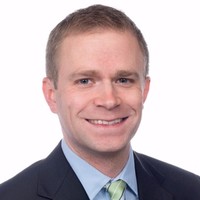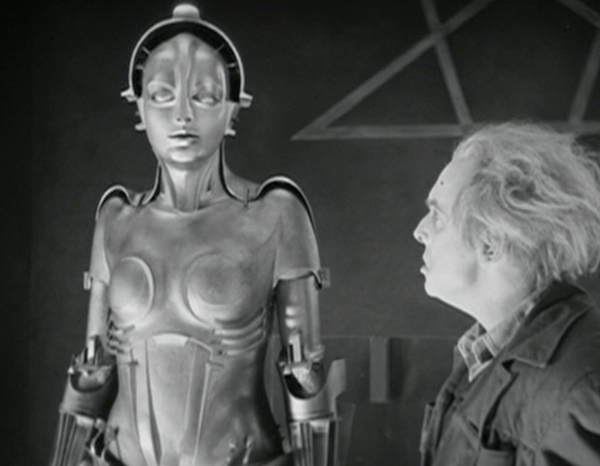At the Heart of Simulation (Part 1)

Tom was a healthy, athletic man in his 50s when he was suddenly struck with an unexpected heart issue — One that hundreds of thousands of people experience each year. And that one incident spiraled into a series of events that would dramatically alter the course of Tom’s life — but at least he still had a life to live. Had it been only a couple decades earlier, Tom’s story may not have continued at all. But thanks to a new medical device born out of computational engineering, thousands of people like Tom are still walking around us every day, and that number is only going to increase over time.
Credits
Interviews: Tom Broussard, Steve Kreuzer
Producer: Taylore Ratsep, Jolie Hales
Hosts: Jolie Hales, Ernest de Leon
Writer / Editor: Jolie Hales
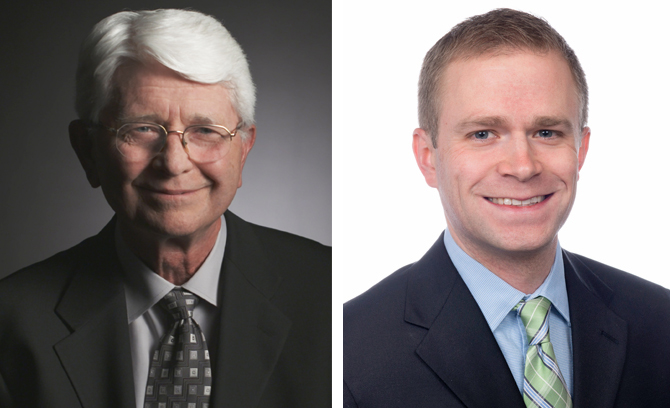
Referenced on the Podcast
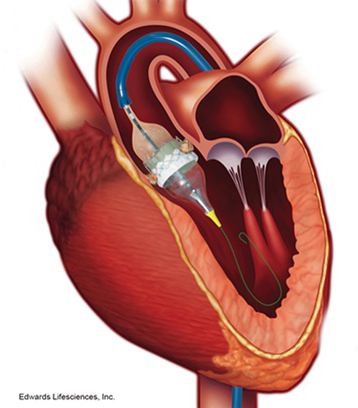
TAVR – Transcatheter Aortic Valve Replacement Animation
Kevin Smith explains his heart attack
The Tin Man Gets a Heart – The Wizard of Oz (1939)
Flavor Flav – by kowarski
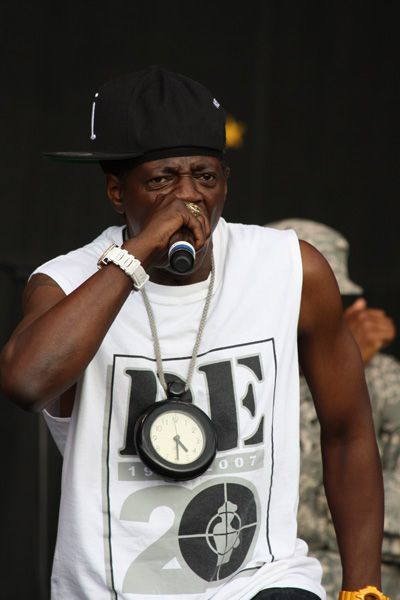
Episode Citations / More Info
- Broussard, Tom. My Story. Stroke Educator, 2020. https://www.strokeeducator.com/?page_id=12 (accessed July 7, 2021)
- In Silico Medicine: Definition, History, Institutions, Main Achievements. Insigneo, Institute for in silico Medicine, 2021. https://insigneo.org/in-silico-medicine-definition-history-institutions-main-achievements/ (accessed July 7, 2021).
- Fassbender, Melissa. How in silico trials are making personalized medicine a reality. Outsourcing- pharma.com, January 2, 2019. https://www.outsourcing-pharma.com/Article/2019/01/02/How-in-silico-trials-are-making-personalized-medicine-a-reality (accessed July 7, 2021)
- The McGowan Institute For Regenerative Medicine. FDA: In Silico Trials for Advancing New Devices and Drug Therapy Applications. University of Pittsburgh, McGowan Institute for Regenerative Medicine, March 17, 2016. https://mirm-pitt.net/news-archive/fda-silico-trials-advancing-new-devices-drug-therapy-applications/ (accessed July 7, 2021)
- Meskó, Bertalan. Virtual Bodies For Real Drugs: In Silico Clinical Trials Are The Future. The Medical Futurist, August 10, 2019. https://medicalfuturist.com/in-silico-trials-are-the-future/ (accessed July 7, 2021)
- Magnaye, Blok. The Virtual Body That Could Make Clinical Trials Unnecessary. The Atlantic Re:think Original, 2017. https://www.theatlantic.com/sponsored/vmware-2017/the-possibility-report-heal/1631/ (accessed July 7, 2021)
- Lee, Bruce Y. The Future Of Clinical Trials? Here Is A Simulation Model Of The Heart. Forbes, January 13, 2020. https://www.forbes.com/sites/brucelee/2020/01/13/the-future-of-clinical-trials-here-is-a-simulation-model-of-the-heart/?sh=98e2eab3aa49 (accessed July 7, 2021)
- Dassault Systemes. Building a Living Hearth Using 3D Technology – Life Sciences – Dassault Systemes. Youtube, November 21, 2014. https://www.youtube.com/watch?v=RrktVIFLqXI (accessed July 7, 2021)
- 3dsSIMULIA. The Living Heart Project: Emily’s story. Youtube, May 21, 2014. https://www.youtube.com/watch?v=6hsx_da1vVs (accessed July 7, 2021)
- HeartValveSurgery.com Facts About TAVR. HeartValveSurgery.com. https://www.heart-valve-surgery.com/tavr-procedure.php/ (accessed July 7, 2021)
- HeartValveSurgery.com. Mick Jagger Gets TAVR for Aortic Stenosis. Youtube, April 17, 2020. https://www.youtube.com/watch?v=UrOAO5bP6nY (accessed July 7, 2021)
- HeartValveSurgery.com. The MitraClip for Mitral Regurgitation. HeartValveSurgery.com. https://www.heart-valve-surgery.com/mitraclip/ (accessed, July 7, 2021)
- American Heart Association. Newer Heart Valve Surgery Options. American Heart Association, February 9, 2021. https://www.heart.org/en/health-topics/heart-valve-problems-and-disease/understanding-your-heart-valve-treatment-options/newer-heart-valve-surgery-options (accessed July 7, 2021)
- Cardiovascular News. Mitral regurgitation patients treated with TEER will require mitral replacement surgery if treatment fails. Cardiovascular News, May 5, 2021. https://cardiovascularnews.com/mitral-regurgitation-patients-treated-with-teer-will-require-mitral-replacement-surgery-if-treatment-fails/ (accessed July 7, 2021)
- ChristianaCare. Mitral Valve Transcatheter Edge-to-Edge Repair (TEER). ChristianaCare, 2021. https://christianacare.org/services/heart/structuralheartprogram/transcatheter-mitral-valve-leaflet-repair/ (accessed July 7, 2021)
- Percutaneous aortic valve replacement. Wikipedia, July 29, 2021. https://en.wikipedia.org/wiki/Percutaneous_aortic_valve_replacement (accessed July 7, 2021)
- Memorial Healthcare System. Mick Jagger Is Having Heart Valve Replacement Surgery. What is it? – Michael Cortelli, MD. Youtube, April 4, 2019. https://www.youtube.com/watch?v=JjckjhmcwGA (accessed July 7, 2021)
- Sutter Sacremento PR. Sutter’s David Roberts, M.D., on Mick Jagger Heart Valve TAVR, KTXL-40, 6 p.m. April 5, 2019. Youtube, April 10, 2019. https://www.youtube.com/watch?v=PJkn19ukCBg (accessed July 7, 2021)
- Maimonides Medical Center. Transcatheter Aortic Valve Implantation (TAVI). Youtube, March 15, 2012. https://www.youtube.com/watch?v=X1Uk9Jvbut0 (accessed July 7, 2021)
- Mick Jagger. Wikipedia, July 6, 2021. https://en.wikipedia.org/wiki/Mick_Jagger (accessed July 7, 2021).
- Transcathetic Aortic Valve Replacement (TAVR) Information. TAVR Patient Experience.Youtube, July 22, 2020. https://www.youtube.com/watch?v=khzUAapvVBk (accessed July 7, 2021)
- Oakes, Bernard., American Heart Association News. Aged wisdom of former Marine comforts other heart patients. American Heart Association News Archive, March 22, 2016. https://news.heart.org/aged-wisdom-of-former-marine-comforts-other-heart-patients/ (accessed July 7, 2021)
- Exponent (consulting firm). Wikipedia, April 22, 2021. https://en.wikipedia.org/wiki/Exponent_(consulting_firm) (accessed July 7, 2021)
- American Heart Association. Quadruple bypass, valve replacement were just the first leg of survivor’s health journey. American Heart Association, 2021. https://www.heart.org/en/around-the-aha/quadruple-bypass-valve-replacement-were-just-the-first-leg-of-survivors-health-journey (accessed July 7, 2021)
- Holland, Kimberly., Weatherspoon, Deborah. What Are the 12 Leading Causes of Death in the United States?. Healthline, March 29, 2019. https://www.healthline.com/health/leading-causes-of-death (accessed July 7, 2021)
- Centers for Disease Control and Prevention. Leading Causes of Death. Centers for Disease Control and Prevention, March 1, 2021. https://www.cdc.gov/nchs/fastats/leading-causes-of-death.htm (accessed July 7, 2021)
- World Health Organization. The top 10 causes of death. World Health Organization, December 9, 2020. https://www.who.int/news-room/fact-sheets/detail/the-top-10-causes-of-death (accessed July 7, 2021)
- Bath Iron Works. Wikipedia, April 29, 2021. https://en.wikipedia.org/wiki/Bath_Iron_Works (accessed July 7, 2021)
- Bath Iron Works. General Dynamics, 2021. https://www.gd.com/our-businesses/marine-systems/bath-iron-works (accessed July 7, 2021)
- Stress Test. Mayo Clinic, June 3, 2021. https://www.mayoclinic.org/tests-procedures/stress-test/about/pac-20385234 (accessed July 7, 2021)
- The Society for Cardiovascular Angiography and Interventions. What Is a Cardiac Catheterization Lab?. Seconds Count, November 8, 2014. http://www.secondscount.org/treatments/treatments-detail-2/what-is-cardiac-catheterization-lab#.YWhKCRBue3J (accessed July 7, 2021)
- Whitlock, Jennifer., Fogoros, Richard. Quadruple Bypass Heart Surgery Process and Recovery. Very Well Health, January 7, 2020. https://www.verywellhealth.com/what-is-quadruple-bypass-heart-surgery-3157249 (accessed July 7, 2021)
- Aphasia. Mayo Clinic, October 20, 2020. https://www.mayoclinic.org/diseases-conditions/aphasia/symptoms-causes/syc-20369518 (accessed, July 7, 2021)
- U.S. National Library of Medicine. Bicuspid aortic valve. Medline Plus, July 6, 2021. https://medlineplus.gov/ency/article/007325.htm (accessed July 7, 2021)
- Wilson, Damien Jonas. What is the Difference Between Sedation and General Anesthesia?. News-Medical.net, June 18, 2019. https://www.news-medical.net/health/What-is-the-Difference-Between-Sedation-and-General-Anesthesia.aspx (accessed July 7, 2021)
- Aortic Stenosis. American Heart Association. https://www.heart.org/en/health-topics/heart-valve-problems-and-disease/heart-valve-problems-and-causes/aortic-stenosis (accessed July 7, 2021)
- Real, Evan. Kevin Smith Opens Up About Life-Saving Heart Surgery, Joining Weight Watchers. The Hollywood Reporter, April 23, 2018. https://www.hollywoodreporter.com/news/general-news/kevin-smith-life-saving-heart-surgery-weight-watchers-ambassador-role-1104889/ (accessed July 7, 2021)
- Djvlad. Flavor Fav on The Story Behind His Giant Clock and Viking Hat (Part 11). Youtube, September 19, 2019. https://www.youtube.com/watch?v=kP8fAbGfbP8 (accessed July 7, 2021)
- Conan Fanatic. Flavor Flav Interview – 11/17/2006. Youtube, September 11, 2018. https://www.youtube.com/watch?v=Ujhnko5ZAHI (accessed July 7, 2021)
- 41 Action News. Heart disease is the number one cause of death. Youtube, February 3, 2017. https://www.youtube.com/watch?v=B8I7uESG5EE (accessed July 7, 2021)
- KOAA 5. Your Healthy Family: Jagger heart problem sheds light on newer procedure. Youtube, April 3, 2019. https://www.youtube.com/watch?v=TmSgY3TDEnE (accessed July 7, 2021)
- News 4 Tucson KVOA-TV. Local heart surgeon breaks down valve replacement surgery. Youtube, April 5, 2019. https://www.youtube.com/watch?v=g97rG1mTmGQ (accessed July 7, 2021)
- WMUR-TV. Runners, volunteers brave cold weather in Boston. Youtube, April 16, 2018. https://www.youtube.com/watch?v=ZXo45TflV_Y (accessed July 7, 2021)
Jolie Hales:
A cath lab, which is technically called a cardiac catheter… called a cardiac… How much wood would a woodchuck chuck if a woodchuck could chuck wood?
Jolie Hales:
Hi everyone, I’m Jolie Hales.
Ernest de Leon:
And I’m Ernest de Leon.
Jolie Hales:
And welcome to The Big Compute podcast. Here, we celebrate innovation in a world of virtually unlimited compute, and we do it one important story at a time. We talk about the stories behind scientists and engineers who are embracing the power of high performance computing to better the lives of all of us.
Ernest de Leon:
From the products we use every day to the technology of tomorrow, computational engineering plays a direct role in making it all happen, whether people know it or not.
Jolie Hales:
Hello everyone, and welcome to part one of a two-part episode series about the heart. And I’m not like talking about romance or love or anything like that. It’s more like the literal heart; the organ.
Ernest de Leon:
Jolie, have you seen the Wizard of Oz?
Jolie Hales:
Yes. Where is this…? This is not on the script.
Ernest de Leon:
Do you know who the Tin Man is?
Jolie Hales:
I know like of his character. I don’t know the actor’s name who plays him.
Ernest de Leon:
So would you say that our listeners really need to have a heart for this episode?
Jolie Hales:
Oh, come on. I should have seen that coming from a mile away. Oh my-
Ernest de Leon:
That’s all the Tin Man wanted. He just wanted to have a heart.
Jolie Hales:
I forgot totally that the Tin Man wanted a heart. I could remember the brain for the scarecrow.
Ernest de Leon:
The scarecrow wanted the brain, Tin Man, heart, the lion wanted courage.
Jolie Hales:
I can’t remember. But once he got his heart, wasn’t it like a key chain or something? Like I don’t…
Ernest de Leon:
Either a key chain or a necklace like Flavor Flav had, ya know?. I just remember them finally getting what they wanted and I don’t remember any material change in their quality of life after that happened. It seemed like it was kind of pointless. I don’t know.
Jolie Hales:
The entire movie’s about them looking for a heart and a brain, and then they end up with a key chain and everyone lives happily ever after, Ernest.
Ernest de Leon:
Yeah, because it is her dream, right, that this is happening.
Jolie Hales:
Yes. Yeah.
Ernest de Leon:
So it was meant to teach her a lesson. I just don’t know what that lesson was.
The Wizard of Oz- 1939:
In consideration of your kindness, I take pleasure at this time in presenting you with a small token of our esteem and affection.
Ernest de Leon:
So just to point out, I looked it up. And not only was I right about the heart, it was a giant, like a big old heart on a necklace, and it had a clock in the middle of it. So, basically it was Flavor Flav’s… It was on a chain technically, but it could have been a necklace, but I don’t know where they… That’s probably the only prop they could find.
Jolie Hales:
That was heart related.
Ernest de Leon:
That was heart related and it was a clock. Flavor Flav wasn’t born yet when this movie came out, so at least I don’t think so. So there’s some kind of like multiple levels of meaning here. I need to go figure this out later. I don’t know if Flavor Flav stole it from the Tin Man because he wants to have a heart or I don’t know.
Flavor Flav- Flavor Flav Interview:
Let me hear y’all say Flavor Flav.
Audience- Flavor Flav Interview:
Flavor Flav!
Jolie Hales:
I’m not familiar with Flavor Flav, but I’m just, I’m looking him up on Google images and you’re right. He legitimately has a giant clock hanging around his neck.
Ernest de Leon:
He has many of them. He has many like-
Jolie Hales:
What in the world? How-
Ernest de Leon:
He’s a musician, obviously. I don’t listen to any of his music. I don’t think I’ve ever heard it. But his schtick is that giant necklaces with clocks on him.
Jolie Hales:
A lot of these necklaces in these pictures that he’s wearing, these aren’t even clock necklaces. They were not made as a necklace in the first place.
Ernest de Leon:
No.
Jolie Hales:
It’s like some of these, he legitimately took a clock off of a wall at some office building and put a string around it. And he’s wearing that over his belly. Clearly, I’m not a pop culture expert at all, and this is so fascinating to me.
Ernest de Leon:
I know. That’s exactly the funny part is that that’s what he’s wearing with his outfits. It’s kind of funny.
Jolie Hales:
Dude, it’s totally the Tin Man. I had no idea.
Ernest de Leon:
Yeah, I had never put the two together until… Look what happened. It took super computing to put those two things together. Man.
Jolie Hales:
I don’t know if super computing wants that credit. Let’s be honest.
Ernest de Leon:
That’s true. They probably don’t.
Jolie Hales:
I think we could do a little bit better than the office wall clock wrapped around someone’s neck.
Speaker 6:
Hit me.
Speaker 6:
(singing)
Ernest de Leon:
I know now why it’s a clock. The clock ticks it. It represents a heartbeat.
Jolie Hales:
Oh, doesn’t he say that?
Ernest de Leon:
Probably. Again, I haven’t seen it in over probably three decades, but I just, it came to mind. I was like, what does a clock have to do with a heart? They both tick. People call them tickers.
The Wizard of Oz- 1939:
It ticks. Look, it ticks.
Jolie Hales:
But yes, we’re going to be talking about heart that is a little bit more than the key chain that the Tin Man got at the end of the Wizard of Oz. Poor Tin Man. And this is really a top that we’re going to talk about for the next two episodes, because it’s something that pretty much affects every single person within earshot in one way or another, I would say. So rather than squeeze it all into just 45 minutes, we thought we’d try to do the subject more justice and talk about it over two episodes. And so to kick us off, I thought we would start by asking Ernest a personal question.
Ernest de Leon:
It depends what kind of personal question you mean to ask.
Jolie Hales:
Okay. Well, you don’t have to answer it if it’s too personal for the world, but here’s the question. Have you ever known anyone, aside from the Tin Man, who has suffered from heart issues?
Ernest de Leon:
I like how you said aside from the Tin Man because I was going to say, as a matter of fact, the Tin Man in the Wizard of Oz.
Jolie Hales:
Stupid Tin Man.
The Wizard of Oz- 1939:
I could stay young and chipper and I’d lock it with a zipper if I only had a heart.
Jolie Hales:
Have you ever known anyone who has suffered from heart issues?
Ernest de Leon:
Yes. Several people actually.
Jolie Hales:
Yeah, that’s not unexpected. And I mean not to go down a somewhat depressing statistical rabbit hole for too long, but heart disease, as many of our listeners, if not all of them probably know, is not only the number one cause of death in the United States, but it’s also the number one cause of death globally. And it’s responsible for 16% of deaths globally and then around 23% in the United States. So even more so in the US than globally.
41 Action News Clip- 2017:
… we know heart disease is the number one killer for both women and men, and that’s why thousands across the country tonight wearing red to raise awareness about heart health.
Jolie Hales:
And when I say heart disease, this includes pretty much any of the problems with your heart. So that’s like blocked arteries, irregular heart beats, heart defects, and all of that.
Ernest de Leon:
Absolutely. And this is something that I, not to give away my age or anything, but have been paying more attention to lately is not just the science behind this, but also preventative measures. Right. One of the things that’s big in medicine right now is trying to prevent things from happening or if you’ve already gone down the road a bit, trying to-
Jolie Hales:
Like, backtrack?
Ernest de Leon:
Backtrack. Or at least pause the negative progress, right, and be able to maybe live a longer, better life or something like that.
Jolie Hales:
Yeah. Well, I saw on your Google calendar when I scheduled this recording that you’ve got a gym appointment right after this, so good for you. You’re taking those steps.
Ernest de Leon:
That’s right. Seven days a week.
Jolie Hales:
Seven days a week. Oh my gosh.
Ernest de Leon:
Seven days a week. I’m in there. Yep.
Jolie Hales:
Man. Good for you. That is dedication. I go running only like three days a week. [groaning sound effect]. So heart disease obviously is so common and it’s probably safe to say that because it’s so common that all of us know someone who has probably struggled with some kind of heart issues. Maybe even know people who have died from heart issues.
Ernest de Leon:
Yes. I had a very good high school friend whose father passed away within the last couple of years before the pandemic, but from heart issues. So yeah, I know it is devastating when it happens.
Jolie Hales:
For real. Yeah. My grandfather, for me, my mom’s stepdad. So we’re not biologically related, but he really did help raise my mom for a number of years. And by all accounts, he was an amazing human being, and he actually died of a heart attack back in 1978 when he was 53 years old, and that was before I was born. So I never actually got to meet him. And then his son who’s my mom’s stepbrother, who was obviously in the same genetic pool there also had a heart attack in his forties. And his teenage daughter who’s my cousin revived him and later it inspired her to become a nurse and her two sisters. So it’s this family full of nurses because of that whole health incident that happened there.
Ernest de Leon:
Yes. That’s usually how it happens.
Jolie Hales:
Yeah, it’s interesting how an event like that can shape our futures and shape our decision making.
Ernest de Leon:
Yeah.
Jolie Hales:
You hear that a lot actually.
Ernest de Leon:
It does.
Jolie Hales:
And it pretty much goes without saying that heart disease has affected all of us. I think we’ve established in some way. And if it hasn’t yet, it probably will. But the good news is that technology is advancing and there are some really amazing treatments available that honestly, I often wonder if they could have saved my grandpa had they existed all those years ago. So today, I thought we’d take everything full circle and not only talk to an awesome engineer who helps with the development of some of these life saving technology, medical-device-type things but, and that’s a scientific term by the way.
Ernest de Leon:
Absolutely. The most scientific.
Jolie Hales:
So not only will we talk to an engineer, but we’ll also talk to somebody who has actually had one of these kinds of devices implanted into his heart.
Tom Broussard:
Then you still got, what I call, idiots like me, people like me, who really still can’t fully appreciate what health means until you go through it. And sometimes go through it over and over and over again, because then I have to go, oh, I have to see my doctors, and I have to actually ask them questions. I have to tell them, you’re wrong. I have to tell them, get me another doctor. It takes a long time to learn all that information.
Jolie Hales:
Meet Tom Broussard, a 69 year old man who growing up always considered himself really fit. He ate pretty well throughout his life, and he enjoyed playing sports like baseball, tennis, roller skating and squash, which I’m sorry, I did not think was a sport. I had to legit google it. And apparently, it’s a two player indoor racket sport. But, I have clearly never played.
Ernest de Leon:
Yeah, myself either, but we haven’t gone into the story yet, but I’m already foreshadowing here a little bit. And in his case, I can see where he might get upset if his health takes a turn for the worst, because he was active and ate well throughout his life. Whereas myself, if something happened to me, I’d be like, yeah, it’s perfectly understandable.
Jolie Hales:
You’re like, ah, I knew this was coming, and-
Ernest de Leon:
Yeah, I did not pay attention to this for like the first-
Jolie Hales:
20 Twinkies a day. Maybe not the best.
Ernest de Leon:
Yeah. First several decades of my life, I didn’t pay attention to this at all. It wasn’t until recently. And so I could see where some damage was done.
Tom Broussard:
I’m still a big roller skater.
Jolie Hales:
And for Tom, life was pretty good until tragedy struck the family in the late sixties. Actually the day after Tom turned 16 years old. So he and most of his siblings were home with their grandma and they were decorating their house because the next day was actually their parents’ 20th anniversary. So it was obviously worth this family celebration. But then Tom’s dad, who was this tall and skinny man, he was also president of a local theater organization. So he and his wife, Tom’s mother, and then also Tom’s sister and then the sister’s boyfriend, they all went to the theater to visit for a bit while the rest of the kids were decorating at home. But then while they were at the theater, Tom’s father suffered a heart attack that suddenly took his life, and he was only 49 years old.
Tom Broussard:
So a lot of my work comes from who I was before all of this started, and a lot of it came from my dad’s useful lessons. Again, when you’re a kid and you’re learning new lessons, you don’t really know that they’re lessons. They’re just sort of happening. And your body and your mind, thank goodness, remembers those things and uses those skills and those lessons in the future.
Jolie Hales:
When Tom graduated from high school, he joined the Navy, which included four years of the Naval academy and then a few years working with submarines and destroyers. And eventually, he left the Navy and then he worked a few different jobs in Naval engineering, including being the director of mechanical engineering and design at Bath Iron Works, which is a big Navy ship builder that is one of the largest defense contractors in the world. And then he pretty much left Bath Iron Works to run his own staffing and training company for 15 years. And then in his early fifties, he decided to pick up a research PhD, as one does, at Heller school at Brandeis University in Boston, then went to Vassar for a year. And then he went back to Heller school to be their associate Dean. So, basically he’s, I’d say kinda smart and kinda motivated.
Ernest de Leon:
Absolutely, because I could not possibly fathom trying to pick up a PhD in my fifties. I think my schooling years are behind me, however it does sound like his dad’s lessons really did lead him down some good paths in general.
Jolie Hales:
Yeah, I would say so. And in 2011, while Tom was in his late fifties and serving as this associate Dean, he then started to notice something was off with his health.
Tom Broussard:
I felt a tug in my chest. I physically felt that and talked to my wife and said, I’m feeling a tug in my chest, especially after we have a meal and go for a walk.
Jolie Hales:
So he went to the doctor who told him that he needed to have a stress test done, which is where the patient basically has a bunch of those sticky electrode patches put all over their chest. And then they do something physical, usually like walk on a treadmill, maybe ride a stationary bike, while their heart rhythm, blood pressure, and breathing are monitored by this medical team. And Tom, who was tall and skinny at the time, remember he does all these sports, he was not what he envisioned as the body type that would have heart disease. He assumed they’d schedule the stress test for a week or two later, but…
Tom Broussard:
He says, no. You’re staying right here, and arranged for a stress test 15 minutes later.
Jolie Hales:
And when the results of the stress test were not so great, the doctor said Tom needed to come back for a cath lab two days later. And in case you’re lucky enough to be unfamiliar, a cath lab, which is technically called a cardiac catheterization lab is where the patient basically is put in a special hospital room and then is awake while doctors do a bunch of tests and procedures to see the arteries. And then they check, like, how well blood is flowing to and from the heart.
Tom Broussard:
I actually got to see it. I’ve never seen anything like this before. I’ve really never been in a hospital before other than when I was young. I got to actually see that all of my heart arteries were clogged terribly. My dad had died young from high blood pressure and obviously cholesterol. I didn’t realize that I had inherited that. And within weeks, I went in for open heart surgery and a new aortic valve replacement.
Jolie Hales:
He had a quadruple bypass where doctors go in and try to clear out or even rebuild all of his clogged arteries.
Tom Broussard:
Unfortunately, all that blood that is used to go through the heart to pump everything else it needs to do, were terribly clogged. A couple were a hundred and the other was 80 and 90% blocked.
Jolie Hales:
Without this surgery, Tom’s chances of having a heart attack at any time were very high. So it came not a moment too soon. And since open heart surgery is pretty invasive on the body, the recovery time is usually around six to even 12 weeks. And three months later, when Tom had finished just recovering from the surgery, his body had more surprises for him. He had a stroke.
Tom Broussard:
I lost my language, and of course I was a Dean. So, clearly, I could not read, write or speak well, and obviously lost my job as a result. And that took about four years to get better.
Jolie Hales:
He got what is known as aphasia; a disorder that results from damage in parts of the brain that are responsible for language. And it robs someone of the ability to basically speak, write and understand both written and verbal language. And as for the cause of the stroke…
Tom Broussard:
About half of people with a stroke, doctors can’t tell what the reason was, so they call it ‘cryogenic strokes’, meaning basically we don’t know where it is, where it came from. In my case, most likely, when the body is healing like open heart surgery and I didn’t get blood thinner, it is coagulating, and unfortunately, it can spin off a little tiny, little clot because that’s what it does to heal itself with the clotting of the body. But if one of them breaks off and goes floating away, that is probably how it got to the top left of my brain and had an ischemic stroke.
Ernest de Leon:
So his stroke was most likely real related to his open heart surgery then.
Jolie Hales:
Right. He thinks so. In fact, since all of this has happened, Tom has made himself basically a research student of human health.
Tom Broussard:
I started to figure out on the inside because you lose your language, but you don’t lose your intellect. So I had just gotten my research PhD and I was still trying to figure out what my big… because when you have a PhD, a research PhD, you are really looking for what your biggest research issue is going to be. And I was still hadn’t figured out what it was going to be until I had my stroke and aphasia. And of course, after that, I realized, oh, that’s what I’m here for, is to figure out how the brain works, so that you not only can you get better, because a lot of people do get better, but now I wanted to know how I could explain how I got better.
Jolie Hales:
So, Tom dove in head first, researching and even writing books about aphasia and how the brain works. But before that, just two years after having his stroke, while he was still learning how to communicate again, his genetic underlying condition of creating plaque and calcium buildup in his body created an issue with his kidneys and he had to have a kidney removed.
Ernest de Leon:
That is just horrible; the luck this man has.
Jolie Hales:
Right? And then two years after that, he had two more small strokes.
Tom Broussard:
What they call small strokes, TIAs; transient ischemic attack. I had two more of those, but again, you go all the way back down to plaque, and both of my neck arteries were almost completely blocked, so I had to get both of those redone.
Jolie Hales:
And for a couple years after that, believe it or not, Tom was actually feeling pretty good when he was able to recover. He was still playing sports and then eating well. And he had even just finished a big trip, traveling around the country, speaking about aphasia and his experiences and research. But then…
Tom Broussard:
I started feeling like I couldn’t breathe. And I thought, oh boy, maybe it must have something to do with my lungs. Again, I’m an idiot health person; still not fully understanding because it’s the heart. I never thought it was the heart because I couldn’t breathe.
Jolie Hales:
After 10 days of meeting with multiple doctors who couldn’t figure out what was going on, who gave him drugs to treat some kind of lung condition that they couldn’t understand, another doctor finally did an x-ray on his chest.
Tom Broussard:
And he said, “Oh, your lungs are filling up. You have heart problems. Go to the ER, now”.
Jolie Hales:
So Tom literally walked a couple blocks down the street right into the ER.
Tom Broussard:
And within an hour, they took a look at everything and they said, oh, your heart is in trouble. You’re clearly, your aortic valve, stenosis is happening, and it is really in trouble, and I was admitted immediately.
Jolie Hales:
It turned out that the new aortic valve he had gotten during his bypass six years earlier was not only damaged, but it was just about destroyed. The aortic valve, as you may decipher, is the valve that opens and shuts, regulating blood flow from the heart into the aorta. If it doesn’t work properly, it’s kind of a big deal. And normally, the aortic valve has three leaflets or flaps, you might say, and they open and close, allowing blood to pass through. So, basically, imagine a thin circle cut into three pie pieces, right? So each of these pie pieces is a leaflet giving way for liquid to pass through and then they close and join together again into the full circle.
Jolie Hales:
And we’ll post a video demonstration on bigcompute.org to show you what we mean. And if an aortic valve experiences plaque buildup or calcification, then it can stop opening and closing correctly, maybe not even being able to close at all. And if that happens, the person can experience shortness of breath and chest pains and eventually heart failure. But the symptoms typically come on gradually, so you know something’s wrong. But in Tom’s case, not only was it calcified, but one of those three leaflets of his aortic valve appeared to be torn off completely.
Tom Broussard:
And that’s why I went from ‘fine,’ to ‘you’re going to die,’ almost immediately.
Jolie Hales:
So the doctors had to figure out what to do, and fast.
Tom Broussard:
They wanted to get me stable because you can have these attacks. And at that point, you are dying. You feel like you’re drowning. They give you a massive CPAP to keep your breath working. And depending on how long it takes, then you’ll get stable again.
Jolie Hales:
Often, patients in as dire situation as Tom go into open heart surgery, but as we established before, that’s majorly invasive on the body, further complicated by Tom’s history that put him at high risk of doing so. Now remember, Tom already had a quadruple bypass a few years ago, followed by a stroke, a couple smaller strokes and losing a kidney. Now he was in his mid sixties. If he underwent another open heart surgery, his body might not fully recover, but there was one type of treatment that might help Tom. A minimally invasive treatment known as transcatheter aortic valve replacement or TAVR. But the TAVR procedure calendars were pretty much already booked up with other patients, looking to have the same treatment done. These are patients who most likely had planned for this process over like months or a year, because they had had shortness of breath and there wasn’t an immediate need, so they got on the schedule eventually. So after moving Tom around a couple hospitals over a few days, stabilizing his condition as much as possible, and even talking about potentially sending him home against the nurses’ will, until they could plug him into the TAVR schedule, he then suddenly have this massive breathing attack right before they were going to send him home right there in the hospital, which let’s just say reprioritized some scheduling.
Tom Broussard:
14 hours later, when I could finally be told and I could understand, all the nurses were all happy. And I said, why you happy? And they said, because you are now number one and they bumped everybody. And I was the number one surgery on that Tuesday.
Jolie Hales:
After Tom’s attack, the medical team started draining the liquid that had filled Tom’s lungs.
Tom Broussard:
Both my right and left lungs were, you know, 30 to 40% full of liquid. And I got to see it all happening. Unfortunately, you’re looking at these little tubes that go right into your chest and then they come out, and of course they go right into these machines and then right into these five gallon buckets and you get to see. But of course, while seeing it happening, I could see me starting to breathe so much better. Literally, it’s laborious to breathe with all that liquid inside, because there’s not enough space to have your lungs work.
Jolie Hales:
Tuesday morning came and the team of Tom’s doctors who were going to do the TAVR procedure gathered around his bed. And then they took 40 minutes to basically explain what would happen on each of their ends to Tom and to each other. So all the doctors seemed like they were confident and they were ready to go with this TAVR surgery except for one, the anesthesiologist. Because Tom was in recovery from a major attack, she was concerned that his body might not take well to the general anesthesia that would be necessary to use in these circumstances. And after the anesthesiologist voiced her concerns to Tom and the group, then the head doctor spoke up.
Tom Broussard:
He says, “I understand what everybody is saying, except I’m telling you, I think you have to have it done today, otherwise he won’t make it”, sending it to the people. And then I say, “won’t make it? What do you mean, I won’t make it?” And he looks at me, he says, “if you don’t go in there now, you will die. You have to go in now.” And they all looked around and they said, “any dissents?”. Then everybody said, “nope”. They said, “okay, go.” And literally, I took off.
Jolie Hales:
So they moved forward. And instead of cutting open Tom’s chest, doctors took a tiny little folded-umbrella-like-device, inserted it into an artery in his groin, guided this device up through his artery, to his heart, with a wire, maneuvered it into place and then unfolded the device, which is typically done with a balloon or maybe built in springs. And it then replaced his aortic valve with this new scientifically engineered one without invasive surgery. And I need to pause here because there’s another person I need to introduce you to.
Steve Kreuzer:
It is a group effort, and there are people all over the world who are doing all different components and parts of this larger societal project, but it is making a difference, I think. And there are certainly people who are walking around, who we probably pass on a daily basis who have had some procedure that otherwise wouldn’t be possible without these types of technologies.
Jolie Hales:
That’s Steve Kreuzer. He’s a guy who knows a thing or two about minimally invasive medical implants, similar to the one that Tom had placed in his heart. Steve actually helps people develop devices like:
Steve Kreuzer:
Implantables like stents and heart valves and others, what they call, structural heart implantables. So, things that are going to go in and probably be there for a while, ideally, and need to be able to assist the natural biology that’s failing in some way with performing the types of functions that are going to keep a patient alive.
Jolie Hales:
Steve has worked with around 20 of these devices, which has given him some solid experience, you might say, and many of these products are called structural heart devices; devices that are implanted into the heart in order to perform a function that your heart basically can’t do well. And over the past decade or so, some of these devices can be installed without any open heart surgery. Instead, these devices…
Steve Kreuzer:
Are loaded onto a catheter and guided to the heart through the circulatory system.
Jolie Hales:
Just like Tom’s TAVR procedure. And Ernest, I got to say, all of this blew my mind because apparently I, I don’t know, haven’t been keeping up with my structural heart technology news because before talking to Tom and Steve, I had honestly never heard of heart devices that can be inserted into the heart through an artery, where the doctors guide the device into place using imaging techniques like echocardiography.
Steve Kreuzer:
Most of these devices have little tiny, super high density metals that are embedded in different regions of the device. And these radiographic markers are intended to show up very brightly on things like x-rays so that you can see where the device is relative to the tissue structures.
Jolie Hales:
I mean, Ernest, have you heard of this?
Ernest de Leon:
I had actually, but it was very recent. I didn’t know about this for a long time. And the way I found out about it was, are you familiar with who Kevin Smith is?
Jolie Hales:
Yeah. At Hollywood.
Ernest de Leon:
Actor, writer, et cetera, director. Yeah. He had one of these types of devices or one of these procedures I should say, done to him a couple years ago.
Jolie Hales:
Oh really?
Ernest de Leon:
I believe he had a heart attack. They took him to the hospital, the same type of situation as Tom. They told him that he had blockages and that if he didn’t get this rectified immediately, he was going to die.
News Clip- The Hollywood Reporter:
Kevin Smith is on the mend after a massive heart attack nearly took his life.
News Clip- The Hollywood Reporter:
I had a heart attack, a massive heart attack, and very nearly died. Put a stent in, bam, here I am. Crazy. Dude literally saved my life.
Ernest de Leon:
He is the first person that I publicly heard talk about having one of these procedures. And I was fairly impressed and it gave me hope for the one day when I will have to have my own TAVR procedure.
Jolie Hales:
You expect it coming down the pipe? That’s funny.
Ernest de Leon:
Yeah. Just like I tell my wife now, I am in anxious anticipation of the day when I’m an old man and I get assigned my first scooter.
Jolie Hales:
Oh, that’s funny. I didn’t know about Kevin Smith. I didn’t know he had one of these, knew he had something done with his heart, but I didn’t know what it was. Apparently Mick Jagger also had something done like this not too long ago. And his was an official TAVR device. So his was similar to what Tom had done. And I’m not a big Mick Jagger fan, but I don’t wish, like, bad health upon him.
Ernest de Leon:
Right, right, on anybody. But yeah, it’s a shame that it takes that kind of a situation to open your eyes.
News Clip- News 4 Tucson KVOA-TV:
Legendary Rolling Stones front man, Mick Jagger, reportedly undergoing heart valve replacement surgery this week in New York.
News Clip- KOAA-5:
Heart valve surgery is done either through open heart surgery or there’s a newer, minimally invasive procedure available. It’s called Transcatheter Aortic Valve Replacement. It’s also known as TAVR. The new valve is implanted inside of a stent and the stent can go in through a small poke-hole in the leg. And it goes up through the aorta.
Ernest de Leon:
A matter of fact, I’m not going to tie the two directly together, but it was shortly after I had heard about Kevin Smith that I started going to the gym every day. So, the two might be loosely related. That’s all I’m gonna say.
Jolie Hales:
That’s interesting. Again, I got to give you props, seven days of the gym. It’s pretty impressive.
Ernest de Leon:
Yeah. Well, I have to undo decades’ worth of bad behavior. So, it’s penance for a life lived in largesse.
Steve Kreuzer:
The huge advantage obviously is that what you don’t have to do is cut somebody’s heart open, wide open, and do any surgery that way.
Jolie Hales:
Which, obviously is a big advantage, especially for patients who might be maybe over the age of 75 or even younger patients with preexisting medical conditions with their kidneys, or maybe something that would make open heart surgery an incredible risk, like in Tom’s case.
Ernest de Leon:
It’s great that these minimally invasive procedures are helping, right, people who otherwise wouldn’t have gotten this kind of help.
Jolie Hales:
Totally. And because, as you might expect, traditional open heart surgery, while it’s incredibly effective for many people, like we’ve said, it’s very invasive on the body. It usually, for example, involves the doctor making a 10 inch cut across the chest and the breast bone, and then exposing the heart, which sounds zombie movie-esque.
Ernest de Leon:
Yes. Did I ever tell you about the time I died?
Jolie Hales:
Wait, what?
Ernest de Leon:
Yeah, I guess I hadn’t told you that, so.
Jolie Hales:
Wait, whoa, whoa, whoa, whoa, whoa. Okay. Obviously now you have to tell me, and this better not be like a, I had a dream that I died or I was a zombie in a movie as an extra or something. This better be a legit story today, to drop a bomb like that.
Ernest de Leon:
It is a legit story. So I was living in New Orleans at the time and I was there with my wife and we were getting ready to leave for, I think dinner. We were in our house and all of a sudden I felt my heart rate just accelerated.
Jolie Hales:
What?
Ernest de Leon:
And I couldn’t figure out what was going on. And it kept accelerating, and it kept accelerating, and it started getting to the point where I could feel it beating and I didn’t know what it was. And I had heard when it’s a heart attack, you can’t breathe and it feels like an elephant sitting on you. So I was pretty sure it wasn’t that, but something was going on. My apple watch started alerting me saying your heart rate is extremely elevated.
Jolie Hales:
It was beeping at you or something? I use the Samsung watch. So I don’t know.
Ernest de Leon:
No, just an alert coming on saying elevated heart rate. So one of the things that the apple watch does is if it thinks you’re sitting down, not doing anything and your heart rate elevates, it will warn you that you have an elevated heart rate while you have no activity. But my normal resting heart rate is sub 100. It’s usually in the 70s or 80s, I think. This scenario that happened to me, my heart rate kept elevating until it was at 200.
Jolie Hales:
What!? That is so crazy!
Ernest de Leon:
Incredibly high. And I felt like I was going to die. So I told my wife, I need to go to the ER right now. So she took me to the ER and they hooked me up to the machine and they knew exactly what it was.
Jolie Hales:
What was it? What was it!
Ernest de Leon:
There’s some sort of arrhythmia that can happen where there are electrical pulses that go across your heart that keep it in a certain rhythm. And sometimes in some people, those electrical impulses get scrambled. And it causes your heart to go into this weird scenario where the heart rate is elevating because it doesn’t know what to do. And the default behavior is to elevate, because it thinks that pushing more blood is what solves the issue. So it turns out that this is a, I wouldn’t say common, but it’s common enough that doctors know what it is when they see it. And it’s one of those where they don’t know what causes it and I’ll never forget this. Right? I’m sitting in this room in the ER and the doctor comes in and says, we’re going to stop your heart.
Jolie Hales:
Oh my gosh.
Ernest de Leon:
And of course I’m sitting here like, you’re going to what? And he’s like, we’re going to stop your heart. The only way to correct this fast, right now, is for us to stop your heart and then we’re going to restart it.
Jolie Hales:
Oh my gosh!
Ernest de Leon:
And because this situation is so rare, they brought in all the medical students into the room. So here I am-
Jolie Hales:
To watch this procedure?
Ernest de Leon:
To watch this procedure happen. So here I am laying on this bed, right, with nothing on but a hospital gown. And even then it’s halfway off because they have to have all these things attached to my chest. All these students are in there and they’re watching.
Jolie Hales:
How many students are we talking about?
Ernest de Leon:
Five or six of them. It wasn’t like there’s a dozen. Right? It was-
Jolie Hales:
That’s still lot of people.
Ernest de Leon:
And when he got every single one, doctor who was doing their rounds and brought them all in to see this because it was rare. It didn’t happen that often. So yeah, they inject a chemical into an IV that essentially stops your heart. And I remember feeling the chemical take hold, and then just the feeling of the blood pooling to the center of your body. Because there’s no more pressure pushing it outward and you get cold, and all of a sudden you’re hearing just, I don’t even know how to describe it. It’s not like you go deaf, but your hearing becomes super muffled as if you’re trying to listen to the outside world through a pair of headphones that are turned off. And then the nurse takes out the syringe with that chemical, puts the other syringe in and the doctor is there looking at the heart monitor, watching it. So it flat lines, right, as you would expect. You’re dead at that point.
Jolie Hales:
Was your wife in the room?
Ernest de Leon:
Oh yeah. She was in there and she was scared, obviously.
Jolie Hales:
Oh my gosh.
Ernest de Leon:
And I’m watching it happen.
Jolie Hales:
But you weren’t conscious when it flat lined were you?
Ernest de Leon:
I was conscious still, because it takes several seconds-
Jolie Hales:
For you to lose consciousness.
Ernest de Leon:
It takes a while for the brain to lose consciousness. Right?
Jolie Hales:
That’s crazy!
Ernest de Leon:
So I’m sitting there watching the heart rate monitor. I see it flat line, the doctor waits a couple of seconds, not like 20, we’re talking three or four. Right? And then nods to the nurse and she puts the other thing and all of a sudden, hard to describe, imagine someone’s playing a movie in slow-mo of a hospital scene and it’s going real slow and it’s real muffled. And then all of a sudden, you accelerate into real time. And the sound becomes full blast. You’re hearing the heart machine registering the heartbeat again. And you’re hearing everybody talking all of a sudden, and then it was fine. The arrhythmia was gone. I didn’t have an issue again. But yeah, that was the time I actually died in the hospital. And it was insane.
Jolie Hales:
Gosh! That’s crazy! But you were conscious when you were dead.
Ernest de Leon:
Conscious the entire time. Yeah. And there might be some argument about whether or not I was medically dead because my brain didn’t cease to function.
Jolie Hales:
Was constantly moving, uh-huh.
Ernest de Leon:
But my heart did flat line for several seconds.
Jolie Hales:
That is crazy, Ernest! Have you ever had any problem since?
Ernest de Leon:
I actually have. I’ve had the arrhythmia surface a handful of times since then, but one of the things the doctor told me was, there are ways you can try to get rid of it on your own so that you don’t have to go to the hospital again. And luckily the handful of times it’s happened since then, and mind you this was almost a decade ago when this happened, I’ve been able to get rid of it.
Jolie Hales:
Oh my gosh.
Ernest de Leon:
But I will say that every time it happens, I am scared that I will have to go to the hospital again.
Jolie Hales:
Okay. That’s so crazy. After I talked about open heart surgery, I thought you were going to talk about a zombie movie or something. This was so much more interesting than that. Oh my gosh! Well, I’m glad that the medical team working on you knew what they were doing, ’cause here you are today.
Ernest de Leon:
So am I. Luckily the doctor was very knowledgeable, got me through it. And one of the things that was great is that he was incredibly confident. He didn’t show concern or worry. He was just like, yep. I know exactly what this is and I know how to fix it, and just went with it. And that helped a lot to alleviate some of the concern there. Whereas if a doctor were being like, I don’t know what to do.
Jolie Hales:
Panic in their eyes, as you see your own heart flat line, I would die. Literally die. I don’t even know how to transition away from that. Obviously our heart is important. I don’t know.
Ernest de Leon:
We got completely derailed.
Jolie Hales:
From supersonic jets to personalized medicine, industry leaders are turning to Rescale to power science and engineering breakthroughs. Rescale is a full stack automation solution for hybrid cloud that helps IT and HPC leaders deliver intelligent computing as a service and enables the enterprise transformation to digital R&D. As a proud sponsor of the Big Compute podcast, Rescale would especially like to say thank you to all the scientists and engineers out there who are working to make a difference for all of us. Rescale, intelligent computing for digital R&D. Learn more at rescale.com/bcpodcast.
Jolie Hales:
It just goes to show that our hearts are really fragile and it just takes a moment to put things in perspective and when you are at high risk, I think, for these open heart surgeries, it can be incredibly terrifying to consider going back into one of those, right? Or if you’ve never been in one at all, you’re just high risk. That sounds so scary. Whereas these minimally invasive procedures that we’ve been talking about are often really effective and they have a really quick recovery time. For instance, we mentioned Mick Jagger was back on his feet, performing just a few days after this procedure that he had, which is one of these minimally invasive TAVR procedures. And if you compare that to traditional recovery time of six to 12 weeks, it’s obviously quite a difference.
Ernest de Leon:
Yes. And also it obviates a lot of the bad things that can happen from a recovery of that type, right? Your body is severely compromised in many different ways while you’re trying to make that kind of recovery. And if you can shorten that and shorten the shock to the body, the complications that can happen are much less.
Jolie Hales:
Well, yeah. Going back to Tom’s story, Tom believes that his stroke, which left him with aphasia and took away his language for four years, was probably a result of recovering from that open heart surgery.
Ernest de Leon:
Yep.
Steve Kreuzer:
You want to keep it as minimally invasive as possible by using these catheter technologies, deploying a device, and if the device is deployed in the right way and is appropriate for the type of pathology that a patient may have, then ideally it replaces the function of the diseased or damaged tissue and allows the patient to improve their quality of life and go off and do all the fun things that they want to do with their family and friends.
Jolie Hales:
There are a few different kinds of these devices being implanted in people all around us, through their arteries, rather than through open heart surgery. And we mentioned that Tom’s particular device was TAVR, which is used to basically replace the aortic valve so that it can open and close correctly. And then there’s other minimally invasive medical devices that include things like TEER or Transcatheter Edge to Edge Repair, where a thin tube is guided through a vein to a patient’s heart. And then a small clip is attached to the mitral valve to help it close more completely, helping restore again, normal blood flow through the heart. And then there are a few different acronyms assigned to these different devices. There’s TAVR, TAVI or TAV-I, I’m not sure how you say that. TEER, TMVR, PAVR, PAVI, and they can be inserted into the body through the veins in a few different locations. So you can insert them through the upper leg, the groin as Tom had, or just beneath the collarbone or something like that. And these devices have really only been around for a decade or less. In fact, FDA approval was only first granted to an aortic valve device like this in 2011.
Ernest de Leon:
That makes perfect sense, actually, because again, I don’t remember hearing about these things until four or five years ago. So it was probably one of those where their use is common at that point. But I just hadn’t heard about them. So I’m assuming most people, unless you are related, immediate family, right, you knew somebody who had it, you didn’t hear about it until again, a public figure came out and said, ‘I had this procedure. It saved my life.’
Jolie Hales:
Yeah, exactly. And that explains why I hadn’t heard of this at all until actually researching this episode. And most patients who have one of these procedures done, typically as for recovery time, they go home literally the next day. But in Tom’s case, since he had had this massive breathing attack and he had all this other stuff going on with his body, they ended up keeping him in the hospital for another four days or so. But then once he was released, recovery was actually pretty easy, much easier than it would’ve been had he undergone, and hopefully survived, another open heart surgery.
Tom Broussard:
They said, you can walk when you get home. We do a lot of walking, and they said, you can drive. Nothing to do with your heart. But obviously they knew about my stroke and things, but otherwise yes, they said, we’re going to call you every day just to check in for a week and make sure you’re doing okay. But they said you should be okay, and I was. It is amazing how you become “fully healthy” almost overnight.
Jolie Hales:
And can I just say how much I love hearing stories like these? These doctors are heroes, obviously, but when you think about it, so are these engineers and anyone working to create these kinds of devices, like Steve.
Ernest de Leon:
Oh, absolutely. Another medical story. So I had a back surgery almost 10 years ago.
Jolie Hales:
Man, 10 years ago was rough for you, health-wise.
Ernest de Leon:
Yeah. Almost 10 years ago. Exactly. And what was incredible was it was due to a degenerative condition between some discs because of an injury I had sustained many years ago. And the doctors were saying, the only way to fix this is to fuse the spine, which is a very invasive procedure and all this stuff. And they were like, hold out as long as you can. Right? And it got to the point where pain was radiating down my legs and I was having trouble walking. So it just so happened, I had gone to see a new pain management doctor who said, I know a guy who can fix this with a minimally invasive procedure that doesn’t require them to open up your back and fuse and all this stuff. And he’s like, it’s not a brand new procedure, but it is newer. There aren’t many neurosurgeons who do this, but let me refer you to him. And I said, at this point, absolutely. Let me go talk to him. Sure enough, the doctor said, absolutely I can fix that. And you will walk out of the hospital the same day we do the surgery. And I didn’t believe him to be honest, but then again, I had no reason to doubt him. So sure enough, we schedule the surgery. I go in and mind you again, pain is radiating down my legs. I’m having trouble walking. I’m in a lot of pain when I walk in the hospital. They essentially do something similar to this where they poke two holes at the very base of your spine. And then they route these tubes up through your spinal column, up to the point where the disc is that’s bulging and pushing on your nerves. They cut off the bulge and then remove it out through the bottom of the spine. Again, like magic. And they have to do it through an active x-ray. So there’s an x-ray going on nonstop while they’re moving these things and doing… anyway. Long story short, I go in, I have the procedure done, which to me was like an engineering marvel as you mentioned, the engineers and others working to create all these kinds of things, right? I wake up from the surgery because they obviously had to put me under. And the first thing I notice is I’m in less pain than I was when I went into the hospital. And you might think, well, yeah, because you were under anesthetic and all this stuff. A couple of hours later, I walked out of that hospital and had less pain from the incision and all the, whatever that had happened than I was having from just the damage that that injury was doing to me.
Jolie Hales:
That’s crazy! Do you remember what it was called? The procedure?
Ernest de Leon:
A laminectomy of some kind. I don’t remember.
Jolie Hales:
I don’t even know why I asked. That is not familiar to me at all. Maybe somebody out there listening knows what that is.
Ernest de Leon:
Yeah. Someone will know exactly what I’m talking about, but to your point, the doctors and engineers who develop all these different procedures and devices, they are absolutely heroes because someone like me wouldn’t have been able to live as fulfilling of a life as I have if somebody hadn’t developed this. Right? So they are absolutely heroes.
Jolie Hales:
That’s so cool. Man, we get to know a lot about Ernest’s health history today. That’s totally interesting.
Ernest de Leon:
And how poor it is. Yes, exactly. It’s getting much better, but it’s a gradual process.
Jolie Hales:
Seven days a week at the gym. Woo!
Ernest de Leon:
Right. I wouldn’t even been able to do that if I hadn’t been able to have this back surgery that I had. Right? Honestly I probably would be in a wheelchair right now if it wasn’t for that. So I am incredibly grateful for the people who develop that technology and that process.
Jolie Hales:
Oh seriously. And this just goes to show how much all of this really does affect everyone in one way or another. In the space of what, 40 minutes, we learned about both a heart episode you went through and a minimally invasive surgery you underwent. So I don’t know, Ernest, I got to say, I hope you have another great story for us in part two of the series. Like, I don’t know, did you have a limb reattached or something? That’d make a cool story?
Ernest de Leon:
I wish I did have a story. It did come to mind. There was another time that I almost died.
Jolie Hales:
No! You have to save it for part two!
Ernest de Leon:
Let’s just say it was a close call. It wasn’t that I actually died. It was just-
Jolie Hales:
Oh, like a piano fell out of a building and landed one foot away from you?
Ernest de Leon:
Well, more like I was underwater for a very long period of time and almost drowned. But anyway.
Jolie Hales:
Oh! Yikes! Every episode we have to have movie references and some story about how Ernest almost died.
Ernest de Leon:
There you go. I’m becoming the Kenny of the podcast. That’s a reference to all of our South Park viewers. Yep.
Jolie Hales:
Doesn’t he die in every single episode?
Ernest de Leon:
That’s right.
South Park Episode clip:
Hey look. I think Kenny’s okay! Oh!
Jolie Hales:
In fact, we’re going to pause right here and pick this subject up again, not necessarily the subject of Ernest’s health but the subject of the heart, in the next episode where we will go into depth more with Steve, the structural heart device engineer guy/undercover superhero. Because at some point we have to tell you what all of this has to do with high performance computing.
Ernest de Leon:
I’ll give you a hint. These devices are designed through computational engineering.
Jolie Hales:
Shh. Don’t tell them Ernest! They never would’ve guessed. Okay. So that part might be a little obvious, but you’ve got to hear about how they’re designed with engineering because medical devices can be so much more complex than many of the other products that we’ve talked about so far on this show.
Ernest de Leon:
Absolutely. Think about the tongue depressor, very complicated device.
Jolie Hales:
I don’t even know what a tongue depressor… oh, that’s like a… shut up dude. Isn’t that just a popsicle stick?
Ernest de Leon:
The wooden stick. Yeah. It’s pretty much a fat popsicle stick.
Jolie Hales:
I was thinking of some medical engineering device and you give me a popsicle stick.
Ernest de Leon:
I was trying to draw a distinction between a tongue depressor and a structural valve replacement device or something. There’s a big delta between those two. Yes.
Jolie Hales:
Please join us for part two in the next episode, to learn more about how these devices, not the tongue depressor, are designed and how things turn out for Tom as well, because we can’t forget Tom.
Ernest de Leon:
And as always, you can learn more about this episode by visiting bigcompute.org, where you can see photos of Tom and Steve and these types of devices.
Jolie Hales:
Yep. So that’s going to do it for this first half of the story.
Ernest de Leon:
And if you want to help spread the word, you can leave us a five star review on apple podcasts.
Jolie Hales:
Oh my gosh. I’m not even going to say anything.
Ernest de Leon:
Or Google podcast or Spotify or Stitch or wherever you get your podcast.
Jolie Hales:
Yes! Those also. And you can tell a friend about us or a colleague if you’re sitting in the office right now, just lean over and tell your colleague, I don’t know why they would be sitting right next to you, but maybe they are.
Ernest de Leon:
And don’t forget both Jolie and I are prolific Twitter-ers so you can tweet us and always remember to use multifactor authentication and 3-2-1 backups.
Jolie Hales:
And I’m not on Twitter, like at all. Oh, okay. We are going to end this. I swear. Stay safe out there, everybody. And we’ll see you in the next episode or hear you, or you will hear us. My goodness. What did I take this morning?
Ernest de Leon:
Sounds like you took my pre-workout drink.
Jolie Hales:
I know! I know, for real.




